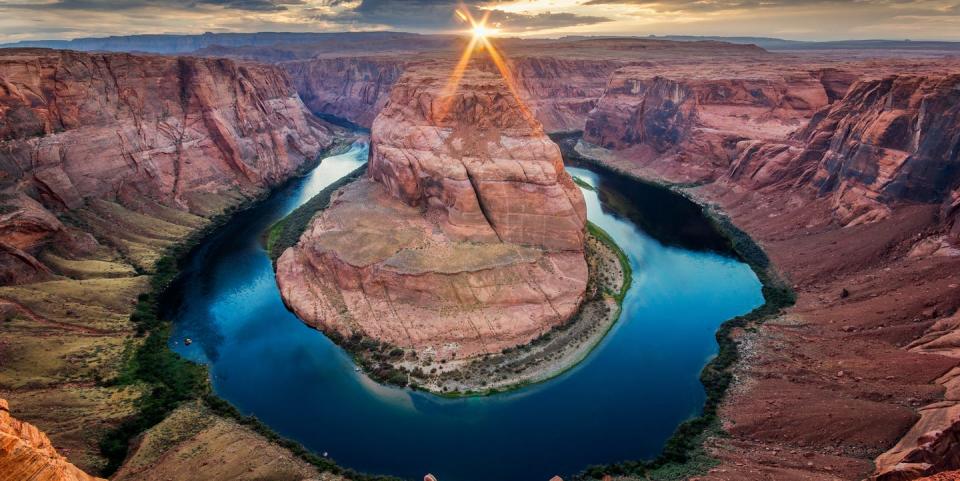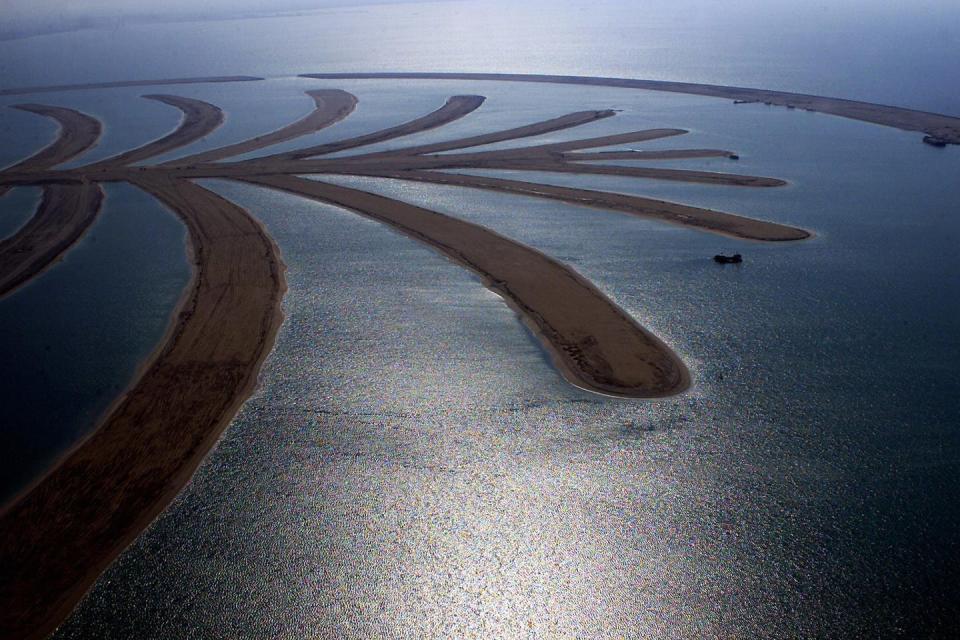We Couldn’t Help But Wonder—What Would It Take to Fill the Grand Canyon?

Around the world, countries have filled in bodies of water with “reclaimed land.”
These range from ornamental uses in Dubai to straightforward waterfront fills.
We’d need 1,000 cubic miles of dirt to fill the Grand Canyon.
Let’s start with a simple question. How much dirt would it take to fill the Grand Canyon? We’ll get to the answer in a bit, but to get there, we have some explaining to do about so-called reclaimed land. And it all starts with the geography game Worldle—a game like Wordle that provides an image of a country and you have six tries to correctly ID the place.
The other day, a friend sent me his daily results from Worldle, where he had guessed (in one try!) the United Arab Emirates. He said what helped him figure it out easily was the reclaimed land off the coast of the UAE, seeing the various places where the city of Dubai has pushed novelty shapes out into the ocean and filled the land there from the Persian Gulf.

Land filled or “reclaimed” in this way is common. One of the most high profile examples is in Monaco, which is enough to have its own Wikipedia page. Other densely populated areas, like Singapore and Hong Kong, have reclaimed land over time. China is also a notorious land reclaimer, building artificial islands in the South China Sea and planning to position airports and nuclear energy plants on them.
You love math problems. So do we! We’ll be your support. Join Pop Mech Pro.
You don’t have to go abroad from the U.S. to find this kind of large scale land fill, either. Florida has some famous examples, including the way Walt Disney filled much of the Orlando area from the naturally occurring swamps of central Florida. On Florida’s west coast, San Marco Island was built up as a place for senior citizens to settle in retirement. Even Chicago, which is technically a coastal city because of Lake Michigan, has reclaimed over 1 percent of its total area by filling in the lakefront.
This is when the Grand Canyon entered the discussion, from another friend who lives in Arizona.
Friend: I’m imagining trying to do filled land in Arizona except
Friend: It’s the Grand Canyon we're filling
Me: They just scrape two feet off the surface of the entire rest of Arizona
Me: Would that even be enough to fill it?
The Grand Canyon is a nearly 300-mile long stretch of the Colorado River where a dramatic canyon has formed over millions of years. It’s an unfathomable mile deep—three Sears Towers and change could be stacked on top of each other inside it—and up to 18 miles wide. Its volume is estimated to be 147 trillion cubic feet. That’s just about 1,000 cubic miles.
How does that volume compare to the surface area of the whole state of Arizona? According to the U.S. Census, Arizona is 113,990 square miles, from which we must subtract 1,904 square miles representing the surface area of the Grand Canyon. That leaves 112,086.
So what number (representing miles deep) multiplied by 112,086 square miles would give us a result of 1,000 cubic miles? That value is about .009 miles, meaning about 47.5 feet. That would need to be removed from the surface of the entire rest of the state in order to completely fill in the Grand Canyon. (Yes, that’s a lot of digging.)
The Grand Canyon is deeper than the deepest lake in the world, Lake Baikal in Russia, which is still an astonishing 5,387 feet deep and holds 22 percent of the world’s fresh surface water. But it’s not the deepest canyon—it has a disadvantage in that its sides are simply the flat surrounding lands rather than a mountain range, for example.
The deepest canyon in the world is the Yarlung Tsangpo Grand Canyon in Tibet, with an average of 7,440 feet deep and a maximum of 19,714 feet between huge mountains in the Himalayas. It’s also longer than the Grand Canyon, meaning we’d require more length and depth, assuming the canyons are similar in width. Tibet is also much larger than Arizona at more than 400,000 square miles.
But that’s a land fill question for another day.
You Might Also Like
